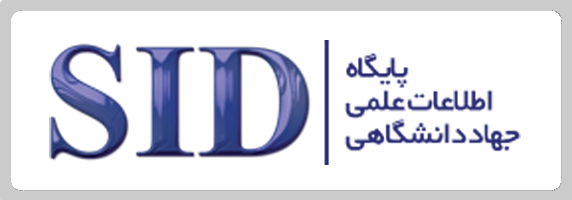Identifying and Analyzing the Factors Influencing Information Literacy Education in Virtual Spaces (Case Study: Second-Level SAMA Secondary Schools in Tehran)
Keywords:
Information literacy, information literacy education, cyberspace, Sama schoolsAbstract
The primary objective of this study was to identify and analyze the dimensions, components, and indicators influencing information literacy education in virtual environments among second-level SAMA secondary schools in Tehran. This qualitative study utilized thematic analysis. Data were collected through semi-structured interviews with 14 experts, teachers, and school administrators selected via purposive sampling. Interviews were analyzed using MAXQDA software. Data trustworthiness was ensured through peer validation, participant feedback, triangulation, and prolonged engagement. Results revealed nine key dimensions for teaching information literacy in virtual environments: technological capabilities, content and information sources, search strategies, critical thinking and analytical skills, ethical and security issues, support and evaluation, emerging technologies, self-regulated learning, and social collaboration. A total of 28 components and 81 indicators were identified. Emerging technologies were perceived as the most influential factor by the majority of participants. Effective information literacy instruction in virtual spaces requires a multidimensional approach that incorporates emerging technologies, fosters critical thinking, promotes social engagement, and aligns with local educational needs. Success hinges on active stakeholder involvement and investment in supportive infrastructure and training.
Downloads
References
Aini, A. (2017). Enhancing students' information literacy. Social Science Education Growth Journal, 19(3), 32-57.
Akakpo, M. G. (2024). Skilled for the Future: Information Literacy for AI Use by University Students in Africa and the Role of Librarians. Internet Reference Services Quarterly, 28(1), 19-26. https://doi.org/10.1080/10875301.2023.2280566
Anyaoku, E. N., Anunobi, C. V., & Eze, M. E. (2015). Information Literacy Skills and Perceptions of Librarians in Colleges of Education in Nigeria. Not Specified. https://works.bepress.com/ebele-anyaoku/4/
Azizi, Z., Rahimi, S., & Ahmadi, V. (2021). The role of digital skills in enhancing undergraduate students' online privacy literacy at Razi University. Information Management Sciences and Techniques, 7(2), 76-92. https://www.magiran.com/paper/2742355/the-role-of-digital-skills-in-promoting-online-privacy-literacy-of-undergraduate-students-at-razi-university?lang=en
Bury, S., Craig, D., & Shujah, S. (2017). Celebrating undergraduate students' research at York University: Information literacy competencies of high achieving students. Journal of Information Literacy, 11(2). https://doi.org/10.11645/11.2.2219
Dolničar, D., Podgornik, B. B., Bartol, T., & Šorgo, A. (2020). Added value of secondary school education toward development of information literacy of adolescents. Library & Information Science Research. https://doi.org/10.1016/j.lisr.2020.101016
Ebrahimi, S., & Setareh, F. (2017). Assessing the information literacy level of Shiraz University students using the Big6 and Eisenberg model. Information and Knowledge Management Quarterly, 4(2), 116-135. https://lib.journals.pnu.ac.ir/article_3613.html?lang=en
Esmail-Ponki, E., Esmaili-Givi, M. R., & Fahimnia, F. (2016). Media literacy and information literacy and their impact on entrepreneurial capabilities. Human-Information Interaction Journal, 3(4). https://www.magiran.com/paper/1586539/media-literacy-and-information-literacy-and-its-impact-on-entrepreneurial-ability?lang=en
Kay, R. H., & Ahmadpour, K. (2018). Negotiating the Digital Maze of Information Literacy. Journal of Educational Informatics, 1(1). https://doi.org/10.51357/jei.v1i1.48
Kikha, B., & Ghaebi, A. (2023). A framework for enhancing information literacy skills for public libraries. Information Management Sciences and Techniques, 9(3), 295-318. https://stim.qom.ac.ir/article_2510.html?lang=en
Kikha, B., Kiani-Khozestani, H., & Ghaebi, H. (2018). Developing a framework for enhancing information literacy skills for public libraries in Iran PhD dissertation, Alzahra University, Faculty of Educational Sciences and Psychology].
Kirker, M. J., & Stonebraker, I. (2019). Architects, Renovators, Builders, and Fragmenters: A Model for First Year Students' Self-perceptions and Perceptions of Information Literacy. The Journal of Academic Librarianship, 45(1), 1-8. https://doi.org/10.1016/j.acalib.2018.10.009
Masoumi-Fard, M., & Nouri, R. (2023). Evaluating the quality of teachers' e-teaching and their information literacy, and predicting academic burnout of first-grade secondary school female students in Abdanan. Educational Innovations, 22(3), 149-171. https://www.noavaryedu.oerp.ir/article_178846.html?lang=en
Miller, S. D. (2018). Diving deep: Reflective questions for identifying tacit disciplinary information literacy knowledge practices, dispositions, and values through the ACRL Framework for Information Literacy. The Journal of Academic Librarianship, 44(3), 412-418. https://doi.org/10.1016/j.acalib.2018.02.014
Mojarad, K., Soleimanpour-Omran, M., & Sodagar, H. (2019). The relationship between information literacy and knowledge creation among graduate students. Information and Communication Technology in Educational Sciences Quarterly, 36, 141-158. https://ensani.ir/fa/article/416410/
Moradi, F. (2018). The relationship between information literacy and knowledge management with academic performance of Lorestan University students in the 2017-2018 academic year Master's thesis, University of Tehran].
Naderi, E., Arab-Hashemi, M., & Seif-Naraghi, M. (2016). Examining the attention given to information literacy skills in the "Thinking and Research" textbook for sixth grade elementary students in Iran's education system. Thinking and Child Quarterly, 7(1), 55-81. https://fabak.ihcs.ac.ir/article_2538.html?lang=en
Panahzadeh Khan-Miri, A., Khishtandar, S., & Nejad-Hajiali-Irani, F. (2023). Investigating the relationship between digital literacy and digital entrepreneurship development (Case study: Art universities of Tabriz). International Business Management Research Journal, 6(4), 199-219. https://jiba.tabrizu.ac.ir/article_16485.html?lang=en
Paul, M., Deja, M., Kisilowska-Szurmińska, M., Głowacka, E., Świgoń, M., & Wojciechowska, M. (2024). Understanding information literacy among doctoral students: An ILDoc model and assessment tool. The Journal of Academic Librarianship, 50(2), 102855. https://doi.org/10.1016/j.acalib.2024.102855
Pirani, A., Kazemzadeh, S., Nazarzadeh, M., & Momeni, H. (2022). Identifying opportunities and challenges of the teaching-learning process in educational management of border areas in Ilam province. Educational Management Innovations, 5(2), 145-167.
Richta, R. (2018). Civilization at the Crossroads: Social and Human Implications of the Scientific and Technological Revolution. Routledge. https://doi.org/10.4324/9781315177663
Shafiei, S., Afrouzeh, M. S., & Afrouzeh, H. (2019). Designing an information literacy model for sports management students in Iranian universities. Communication Management in Sports Media Quarterly, 23, 39-50. https://sportmedia.journals.pnu.ac.ir/article_5694.html?lang=en
Silverblatt, A. (2016). Reflections on Information Literacy. https://cyberleninka.ru/article/n/reflections-on-information-literacy
Taghavi, H., Khaleghkhah, A., & Dirin, F. (2022). Structural model of factors affecting information self-efficacy of educational agents. Information Management Sciences and Techniques, 8(4), 113-130. https://stim.qom.ac.ir/article_2385.html
Talebi, A. (2017). The relationship between information literacy and organizational performance of students: A case study in a military university Master's thesis, Islamic Azad University, Science and Research Branch].
Vongkulluksn, V. W., Shortt, M. B., Akinkuolie, B., & Xie, K. (2024). Information literacy instruction in naturalistic high school science classrooms: Instructional strategies and associations with students' prior knowledge. Teaching and Teacher Education, 144, 104572. https://doi.org/10.1016/j.tate.2024.104572
Zafarmand, A., Mehram, B., & Noghanidokht-Bamani, M. (2022). Hidden curriculum and students' resistance economy-based behavior (Case: A girls' elementary school). Educational and School Studies, 11(1), 223-253. https://www.magiran.com/paper/2450119/hidden-curriculum-and-behavior-adequate-to-resistance-economy-in-students-case-a-girl-elementary-school?lang=en
Downloads
Published
Submitted
Revised
Accepted
Issue
Section
License
Copyright (c) 2025 مجید ابراهیمی (نویسنده); هادی رزقی شیرسوار (نویسنده مسئول); عباس خورشیدی (نویسنده)

This work is licensed under a Creative Commons Attribution-NonCommercial 4.0 International License.





